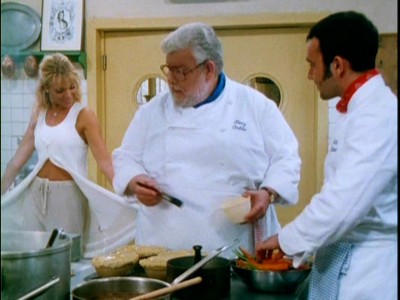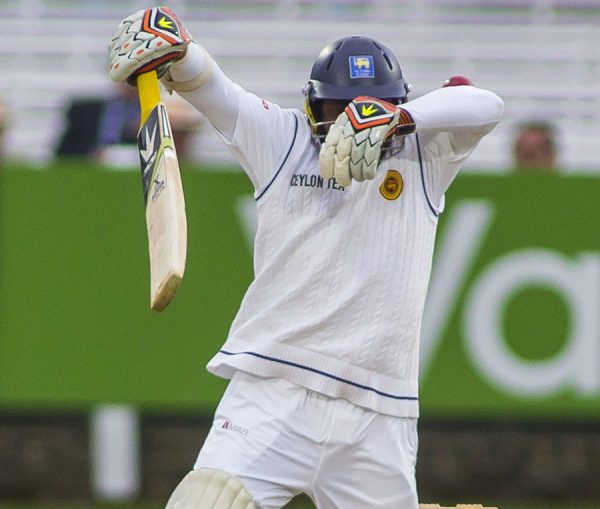
A gradual but inevitable descent into cricket-based loathing and bile.
Things We (Would) Like To See, Number 1: The Old-fashioned Cricketer
Thus, an era ended. With Rangana Herath departing England following a handy little series – resulting in more career Test runs on these shores than Virat Kohli (276 versus 134) – it’s almost definitely the last time we’ll see the little guy again. At least not until he returns to his rightful occupation as a restaurateur. Can’t you just picture him, polishing glasses, tasting a sauce and welcoming guests in a bowtie and waistcoat, potentially until he gets the call again from the Chairman of Selectors, like a cricketing Henry Crabbe?

She could polish our champagne flutes anytime, etc.
The reason for the end of an era is simple: no other played who debuted in the 1990s is still playing Test cricket – unless India recall Harbhajan again – and even if he hadn’t dated from a time when Gala’s Freed From Desire was a contemporary dance song and not an ironic football chant, Herath strikes us as an old-fashioned kind of cricketer, from back when the only pre-match training was a brisk walk from the changing room to the fine leg boundary. From his build to his guile, there is nothing modern about him. But let’s return to the age thing first.
Only a few cricketers who started playing Test cricket prior to the first official T20 match in 2003 are still going: Devon Smith, Marlon Samuels, Jimmy Anderson (by about three weeks) and about half the Pakistan side. Nearly every Test player has spent their international (and indeed domestic) career in the T20 age. This is why we see so many records for quick run-scoring being broken, why batsmen are generally required to have something unorthodox in their repertoire of shots and why so few (English) spinners are selected as strike bowlers. It won’t be long before all professional cricketers have always had to ‘execute their skills’ across three kinds of matchplay.
This is why Herath should have been cherished more whilst on this tour. Although clearly a very good player who is widely respected, any praise that came his way from the commentators always had a slight hint of japery attached to it. This was never cruel and always fond, but it generally felt like a bit of a stigma was unfairly associated with his weight and his unathletic character. Of course, we’ll be first in line to do any kind of mocking in this regard, hence the hypocrisy of us finding fault at professional commentators for this attitude whilst posting pictures of Richard Griffiths.

And Samantha Janus, to be fair.
Despite our not-so-subtle attempts to belittle Herath, we come from a position of respect and awe. Modern spinners just seem a bit too ostentatious to us, with their variations and mystery balls and their boy-band hairdos. We like our spinners to bowl maidens instead. To adjust their lines and lengths infinitesimally with each delivery, like Martin Van Gerwen moving his stance by an inch in order to squeeze a third dart into the treble twenty. Fielders around the bat, the batsman unable to get the ball off the strip, an over bowled in sixty seconds flat.
A great spinner doesn’t need to be lithe or a gazelle in the field. It was amusing to watch Herath chase after a ball to the mid-wicket boundary, but he never gave up and was arguably no less effective in the field than any number of younger, more athletic, men. Likewise, despite debuting at a time when it was acceptable to only be capable at one of the three disciplines, his batting was competent, in the manner of a reluctant guest being required to take part in the final section of Reeves & Mortimer’s Shooting Stars.

We don’t know how much time we have, but when the time is up, you’ll hear this sound.
Of course, Herath had to contend with emerging from Muttiah Muralitharan’s shadow with nowhere near Murali’s unique set of skills. In that regard, considering his age, reaching the landmark of 300 Test wickets would be akin to James Tredwell replacing Graeme Swann and going on to be an integral part of the team. Perhaps that’s what we admire most about Herath; by being overweight, by having a ‘tache and relying on skill rather than mystery, he could have fitted into any England team from the past century. Cricket was never meant to be fashionable, or played by men with tattoos. It’s a sport for all shapes, sizes and indeed ages. And oh how we wish to see his like again.

2 Comments
Post a Comment
1
Tim Bresnan’s Heavy Ball
06 Jul 2016 21:51
I’m guessing he’s a dart thrower.
2
Horace
06 Jul 2016 11:51
Who’s Martin Van Gerwen?